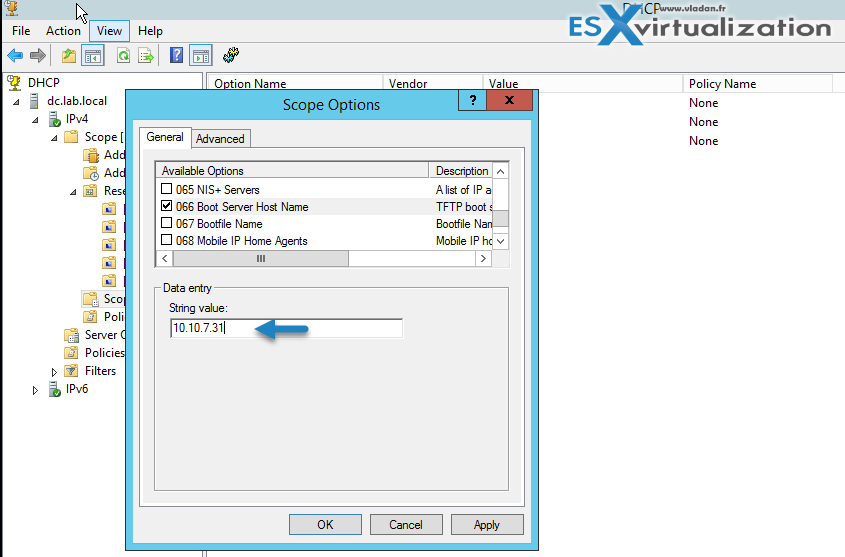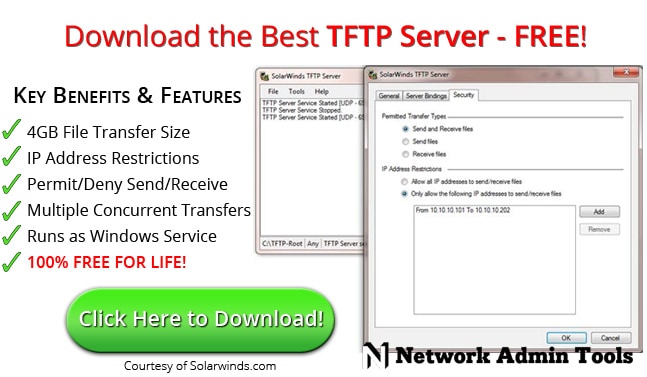

- #Dhcpd tftpserver option manuals#
- #Dhcpd tftpserver option install#
- #Dhcpd tftpserver option windows#

Just open the config file and add the following lines: #Class to Match Option 60 It is very easy to create a class which matches option 60 from the DHCP request.

I use the isc- dhcp-server on Ubuntu: :~$ dhcpd -version If you are running a Linux DHCP server, as I do, the config is even more simple. DHCP Vendor Class Identifier – Configure Linux DHCP Server Do this for all vendor classes, you need to configure individual options for. In my case, this is only option 66 and 67. On the next page you can now set individual DHCP option for devices with this vendor class: DHCP Vendor Class Identifier – Create Policy Optons They should use the same IP range as the scope itself. On the next screen, I do not want to define a special IP range for those devices. A single request might include both options 150 and 66.
#Dhcpd tftpserver option install#
Note Cisco IP Phones might also include DHCP option 3 in their requests, which sets the default route. TFTP Server & DHCP Server - network installation, TFTP Server, sudo aptitude install tftpd-hpa tftp-hpa cd /etc/default sudo cp tftpd-hpa tftpd-hpa.orig more tftpd-hpa /etc/default/tftpd-hpa TFTPUSERNAME'tftp' TFTPDIRECTORY'/home/hsu/tftp' TFTPADDRESS'192.168.180.11:69' TFTPOPTIONS'-secure' sudo /etc/init. DHCP option 66 gives the IP address or the hostname of a single TFTP server. I only use the created vendor class from above as a rule to use the policy. DHCP option 150 provides the IP addresses of a list of TFTP servers. Callmanager (TFTP server) 10.19.17.1, DHCP server (Linux) 192.168.1.3, 7914 phone will get 10.19.17.1 as TFTP, 7940/60 will get 192.168.17. Select the scope for which you would like to configure the options and create a new policy: DHCP Vendor Class Identifier – Create new PolicyĬlick “Next” to get to the screen, where to define the policy rules: DHCP Vendor Class Identifier – Create Policy Rules In the pop-up window select “Add”, to create a new class: DHCP Vendor Class Identifier – Add Vendor Class to ServerĪfter that, you just need to define a new policy for the scope.
#Dhcpd tftpserver option windows#
Open the DHCP management console on the windows server and right click the IPv4 server and select “Define Vendor Classes”. If you have the value for Option 60 for each device, you can start to use them. DHCP Vendor Class Identifier – Configure Windows Server Maybe a good point for a feature request.
#Dhcpd tftpserver option manuals#
I haven’t found this information in the manuals so far. For the Comware Device, which is a 1920, it is this: HPE. I always do a Wireshark trace and check option 60 in the DHCP Discover itself. The first step is to get the information, what is in option 60 for each device. DHCP Vendor Class Identifier – Get Option 60 I will provide a different config file for each switch via TFTP. I will use two different switches, an AubaOS switch and a Comware based switch to show the principles. The answer is to use the DHCP Vendor Class Identifier, DHCP option 60.Įvery device sends this option to the DHCP Server, and each DHCP Server can answer with specific options, depending on the option 60. In several meetings I get the question, how can I sent different DHCP options to different devices.


 0 kommentar(er)
0 kommentar(er)
